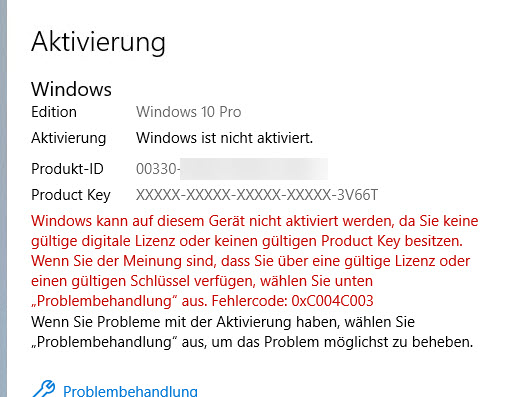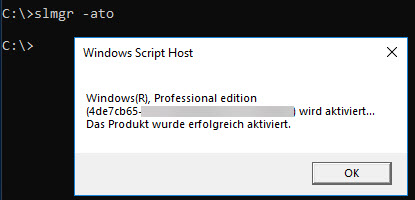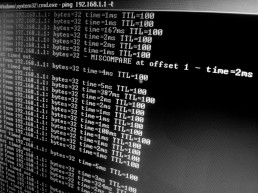Remote Work: Der neue Arbeitsplatz
Remote Work: Der neue Arbeitsplatz
Das ist Remote Work
Mobiles Arbeiten, auch Remote Work genannt, ist keine neue Erscheinung: Es handelt sich dabei um eine Form des ortsunabhängigen Arbeitens. Beim Remote Working können Mitarbeiter einen festen Arbeitsplatz haben, sind jedoch nicht dazu gezwungen. Sie können also genau so gut im Park, in einem Café oder einem Co-Working-Space ihre tägliche Arbeit verrichten. Arbeitnehmer benötigen demnach nicht länger einen festen Schreibtisch im Unternehmen, sondern können an jedem beliebigen Ort des Landes oder gar der Welt arbeiten. Das einzig Wichtige: Das Ergebnis der Arbeit muss stimmen. Von wo aus diese Pflicht erfüllt wird, spielt hingegen eine untergeordnete Rolle.
Dieser Ansatz macht mobiles Arbeiten besonders attraktiv, da es die Vorteile des Homeoffice für Angestellte ausschöpft und mitunter erweitert. Das Modell ist sicherer als die Tätigkeit als Freelancer: Während Freiberufler mitunter lange Pausen zwischen Aufträgen und Projekten verbuchen müssen, besteht bei Remote Work ein normales Anstellungsverhältnis. Dennoch ermöglicht dieser Schritt den Angestellten ein freies und selbstbestimmtes Arbeiten. In Zeiten, in denen eine Homeoffice Pflicht vorangetrieben werden könnte, lassen sich auf diese Weise die wichtigsten Fachkenntnisse aus unterschiedlichsten Regionen in die Firma einbringen.
Übrigens: Damit mobiles Arbeiten funktionieren kann, dürfen die rasanten technischen Entwicklungen nicht vernachlässigt werden. Nur wer über ausreichend Bandbreite, leistungsfähige Endgeräte und weitere Tools wie einen Windows Remote Desktop und Windows Server 2022 CALs verfügt, kann die gewünschte Leistung erbringen.
Die Unterschiede zwischen Remote Work und Homeoffice
Obwohl Remote Work und Homeoffice auf den ersten Blick sehr ähnlich wirken, handelt es sich dabei nicht um dasselbe. Der deutsche Begriff für Homeoffice ist Telearbeit und setzt voraus, dass Mitarbeitende von zu Hause aus arbeiten. Damit genießt der Arbeitnehmer zwar Vorteile im Homeoffice, kann jedoch nicht sämtliche Vorteile von Remote Work für sich nutzen.
Im Rahmen vom allgemeinen Homeoffice oder einer Homeoffice Pflicht für Mitarbeiter stellt der Arbeitgeber die benötigten Arbeitsmaterialien: Dazu gehören beispielsweise ein Laptop, Windows 11, Bildschirme und zusätzliche Büroausstattung. Diese Notwendigkeit regelt die Arbeitsstättenverordnung. Allerdings lässt sich im Arbeitsvertrag genau regeln, welche finanziellen Teile der Arbeitgeber übernimmt und welche beim Arbeitnehmer verbleiben.
Bei Remote Work hingegen können Mitarbeitende von jedem beliebigen Ort aus arbeiten. Es besteht keine Bindung an das Büro zu Hause. Grundsätzlich müssen Arbeitgeber kein Equipment für diese Form des Arbeitens stellen, da es keine eindeutigen gesetzlichen Regelungen dazu gibt. Dennoch sollte der Arbeitgeber zumindest das notwendige Arbeitsequipment stellen, um ein vernünftiges und produktives Arbeiten zu ermöglichen.
Eine Gemeinsamkeit haben beide Arbeitsmodelle: Sowohl beim Homeoffice als auch bei Remote Work gelten das Arbeitszeit- und das Arbeitsschutzgesetz.

Das gehört zum Remote Work Arbeitsplatz
Die Vorteile von Remote Work sind sowohl die zeitlichen Freiheiten als auch die ortsunabhängige Wahl des Arbeitsplatzes. Doch: Ohne die richtigen Arbeitsutensilien und Tools funktionieren weder das Homeoffice noch mobiles Arbeiten.
Ein Windows Remote Desktop ermöglicht den Zugriff auf die interne IT-Infrastruktur und stellt sicher, dass die Daten in einer sicheren Umgebung erhoben, geändert oder gelesen werden können. Mit diesen Remote Desktop Services ist es möglich, die Anwendungen per Fernzugriff anzusteuern und von der Ferne aus vor Ort zu arbeiten. Das macht die täglichen Aufgaben einfacher und erlaubt eine höhere Produktivität unter den Mitarbeitern, die auf mobiles Arbeiten setzen.
Da die meisten Unternehmen mittlerweile digitaler aufgestellt sind, ist der Zugriff auf einen modernen Server wie den Windows Server 2022 selten ein Problem. Dabei gilt es, die richtigen Lizenzen zu wählen, die für den Zugriff auf einen solchen Server notwendig sind. Mit den richtigen Windows Server 2022 CALs kann beim Remote Work ein direkter Zugriff ermöglicht werden. Übrigens: Der neue Server von Windows eröffnet Firmen viele neue Möglichkeiten. Dazu gehören nicht nur zentrale Features, die den unternehmenseigenen Workflow unterstützen, sondern auch die besondere Effizienz im Rechenzentrum. Sie wird durch eine bessere Skalierbarkeit, Netzwerklösungen sowie leistungsstarke, softwarebasierte Speicher optimiert.
Damit dieses Vorgehen erfolgreich ist, müssen Unternehmen in die Digitalisierung und eine gute IT-Infrastruktur investieren. Sind beide gemäß dem Stand der Technik ausgerichtet, modern und flexibel, entsteht ein klarer Wettbewerbsvorteil für die Firma.
Header Bild: © andreusK, stock.adobe.com
Activate Windows 10 via (CMD)
Activate Windows 10 via (CMD)
Sometimes Windows cannot be activated via the interface Without third-party Windows 10 activation tools, you can activate Windows 10with CMD for free. You can open the command prompt in two variants under Windows 10: With administrator rights or as a user with limited rights. Some actions performed in the command line require extended rights. In such cases, you can then specifically start the Windows 10command prompt as an administrator.  1. Start the command prompt as administrator (right click):
1. Start the command prompt as administrator (right click):  2. Write the following code in the window: slmgr -ipk XXXXX-XXXXX-XXXXX-XXXXX (Instead of XXXX, please enter the product key)
2. Write the following code in the window: slmgr -ipk XXXXX-XXXXX-XXXXX-XXXXX (Instead of XXXX, please enter the product key)  3. The key must then be activated. Write the following lines in the command prompt: slmgr -ato
3. The key must then be activated. Write the following lines in the command prompt: slmgr -ato 
What is new in the New Update of Windows 10? We will be happy to answer this question under this link here
Remote Desktop Services: Home office in the age of Corona
Remote Desktop Services: Home office in times of Corona
Home office on the rise
„, said Reimann, who praised the concept of mobile working and appealed to „continue to use the good experiences of the last few months with mobile working“. More personal responsibility and the trust of the employer puts some employees in a good mood and increases productivity. Many can also better plan their daily lives with their families and enjoy more flexible working hours and short commutes.

Cons
on the rise. Especially in mobile working, however, the working conditions are often not ideal: smaller screens, poor lighting, awkward sitting positions, etc. are too often the order of the day. Every third person who spends more time in front of monitors even says that his or her vision felt worse during corona time. While hardly any companies themselves have suffered serious productivity losses as a result of mobile working, says Michael Karrenberg, regional director of risk services at Altradius. „However, due to the increase in mobile working, business activities will shift in location.“ This, he says, is leading to increasing uncertainties, especially in those industries whose sales depend on the numerous commuters to the cities and office workers.
Remote Desktop Services - Access from outside
, even including new features, there is no reason for companies to worry in this area.

Beware of hackers
to ward off access attempts such as a brute force attack. Furthermore, it becomes more difficult to keep track that all devices and software have been provided with all updates. Security solutions that protect against RDP attacks are therefore becoming indispensable for companies to protect themselves, their data and their employees against cyber-crime. What is particularly critical is that vulnerabilities in RDP are often unknown and only become public after they have been exploited.
Can the classic office still be saved?
, looking to the future.



